| Article ID | Journal | Published Year | Pages | File Type |
|---|---|---|---|---|
| 3019700 | Revista Española de Cardiología Suplementos | 2007 | 5 Pages |
Abstract
The heart rate has been clearly identified as a risk factor in epidemiological studies. There are direct relationships between the resting heart rate and the number of ischemic episodes, the incidence of sudden death, cardiovascular mortality and all cause mortality both in patients with known ischemic heart disease and in the general population. Heart rate reduction can be achieved by exercise training or by using beta-blockers, verapamil, diltiazem or digoxin. However, use of these drugs is limited by contraindications and by intolerance of effective doses, generally due to hypotension or atrioventricular conduction abnormalities. Ivabradine reduces the heart rate by a unique mechanism of action. It blocks If channels in the sinus node, without having any effect on the myocardium or blood vessels. Explotation of this alternative mechanism opens the way for new approaches to the treatment of myocardial ischemia and heart failure, to secondary prevention, and to the treatment of inappropriate sinus tachycardia, with the possibility that it may also reduce the risk associated with sinus tachycardia in the healthy population. The results of several ongoing clinical trials will provide the information needed to identify the most appropriate applications for this new class of drug.
Keywords
Related Topics
Health Sciences
Medicine and Dentistry
Cardiology and Cardiovascular Medicine
Authors
José López-Sendón, Esteban López de Sá,
